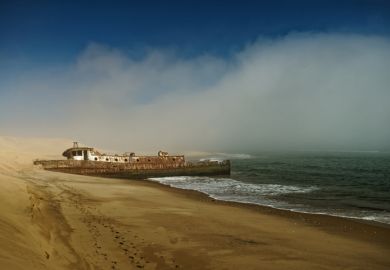In 1887 Thorold Rogers anticipated that the data in his massive Six Centuries of Work and Wages would attract few readers, "the form of such a work is necessarily repulsive, and the dry details of business transacted many centuries ago will have but little charm for the general public"; though he went on to explain that, "in these relics (lay) no small portion of the bygone life of the English people", and the materials would broaden feeling for national history. A century ago this transformed the study of cycles and seasons, opening up new fields of research, and his seven volumes took their place among the historical appreciation which moulded economic and social history. The delegates of Oxford University Press, not all sympathetic to Rogers's approach, realised its potential; the work is still cited, by Phelps- Brown and Hopkins, for example, as part of the building blocks for price and wage series.
Rogers, who was Liberal MP for Southwark, 1880-86, worked on his book for over 25 years and his commentaries include nuances, which, read today, offer an attractive vista of why wages and prices need to be rooted in time and place. The recent exemplary scholarship by A. J. S Gibson and T. C. Smout, Prices, Food and Wages in Scotland 1550-1780, is also in the best tradition of scholarship: excellent integration of context, informed by knowledge of how series are generated, including such matters as the influence of the state, climate and market. Above all, their series are rooted in the historical process, using explanations, monetarist, production-based, climate etc, which fit the evidence.
Can the immense learning that now makes up price and wage history be boiled down, without losing the understanding which goes into price series? David Hackett Fischer's The Great Wave attempts to compress European price history into a particular, esoteric, view of the dominance of very long-term change in prices, just four waves in the past 800 years. It comes with earnest marketing pointers, including big print, well-produced maps of Europe, and graphs of price changes. It is now a bookclub choice.
Fischer's is a broad sweep largely based on secondary reading; giving the author "nearly four thousand years of ... interpretive opportunities ... limited only by the reach of our imagination". Utilising the work of more prosaic plodders in price history, who have actually worked in the ancient archives, the author sweeps up the records of commodity prices, the evidence of changing money values, etc, and goes beyond explanations of production and exchange, past inferred knowledge about historical change, to reach "a still higher level of abstraction", where "prices may be studied as clues to the nature of change itself". This leads, apparently, to his four great waves; not the "highly predictable" cyclical rhythms, these four are variable and less predictable, although each follows the same pattern of price-relatives, similar movements of wages, rents, interest rates etc, and each ends in "shattering world crises". The author claims that the world may now be entering this final zone again, after a slow build-up from the quiet waters which have typified the earlier 20th century.
Academic analysis on cycles is given short shrift. We are told "cycles must be teased from the data", commonly "filtered and detrended" by statistical techniques. Not so the great waves: students will be pleased to learn that "no theoretical models or statistical massages" are needed to summon waves from recalcitrant sources. "To discover these secular trends in the data, it is necessary to do something that is very simple, and yet immensely difficult for many academic scholars. One must learn to look the evidence in the face without fixed ideological, theoretical or epistemological preconceptions."
There are obvious problems here. Price series rest on many-layered foundations, combed together by historians suspicious of simplifying the apparently endless permutations of change through time and place. To aid this research, statistical methods have been crucial to understanding the interplay of the various data, and the more modern our techniques, the more accurate and valuable these assessments become. Dismissing such work makes for easier classes, but closes down ideas to which students should be exposed.
Endowing four waves with a predominant position in price history misses the significance of all sorts of convulsions, big and small, which fall outside their horizon. Yet the past 800 years are dominated by sharp, short-run ups and downs, caused by seasons, climate, and monetary convulsions, with later tradecycles adding new dimensions. It is in this sense that Keynes, and most price historians, are right; it is in short and medium patterns, a range from a few months to several years, that most people lived out their lives and understood their fates.
Fischer tries to substantiate his waves by a curious jumble of stories, often irrelevant, anecdotal, and buttressed by observations, which, not to make too fine a point, flutter around the reasoning of a school book. Thus we read that the "general crisis of the 17th century I was the era of neo-Calvinism - the narrowest, darkest, bleakest, and most pessimistic form of Christianity that has ever been invented, more so even than the theology of Calvin himself", and "the laws of neo-classical economics are unable to explain the price history of the American candy bar in the 20th century".
Similarly, the rise of population in the 12th and 13th centuries was mainly a result of increasing fertility, after years of stability and prosperity: "women throughout Europe married at earlier ages and decided to have more children", and for the 18th century, after mention of "stablisation of death-rates" and a rise in life expectancy, he concludes that an improvement in conditions was part but not all of the answer: "Husbands and wives decided to have more children because the world appeared to have become a better place in which to raise a family".
There are basic errors in his discussion of banks and money: apparently Britain and its empire were struggling to maintain solvency from 1763 to 1775. Further, the economies of Western Europe apparently suffered inflation and stagnation in the 1780s, which will be a surprise to students of the British industrial revolution. "After war began (in February 1793) the Bank of England ceased to redeem its banknotes in specie", actually, this came four years later. Fischer's comment that the currency saw a "consequent decline" in purchasing power needs qualification: serious decline came ten years after the suspension of cash payments. There is a curious inability to grasp why detail is essential in the discussion of the state and bank assets. In his medieval wave crisis, "The big Florentine banks made foreign loans to the kings of England and Naples. This was a dangerous business. Once it had begun, the loans grew inexorably larger. The banks could not call them in, for fear of default or confiscation. The results were inexorable". Well, actually, there were other things going on!
We read that "monetarism alone is powerless" to explain the price rise of the 16th century: "The price revolution came first; American treasure followed later." Underlying this is some evidence that price rises in the early 16th century may not owe as much, as once thought, to the direct, physical distribution of precious metals, But this can be taken too far: the transmission of credit from Spain was remarkably fast to those areas dealing with foreign trade and government payments. Fischer concedes that monetary explanations are basic to maintaining price rises later in the century, but the relation of these to the earlier causes appears fuzzy. Again, there is more to this.
Fischer's prose used to support these waves will, no doubt, be attractive to a younger generation. We read about Paris in 1729, where "Beggars died of hunger in the streets, while the rich rode past in gilded chairs on the shoulders of other human beings. The suffering poor crowded miserably into a maze of medieval tenements. Many lived like animals on close-built bridges above the river Seine, while the great families of France resided in magnificent mansions only a few streets away".
A few pages on from the Florentine bank collapse, we read that, "in September 1324, when the people of England were groaning under the weight of their accumulated miseries, the young Hugh Despenser had accumulated large deposits in Italian banks. This money had been extracted from starving peasants on his estates and from the profits of his offices. Despenser and his father so outraged their countrymen that they were seized by the rebels and summarily executed. Young Hugh Despenser's head was triumphantly displayed on London Bridge, 'with much tumult and the sound of horns'." We next read about the torture of Edward II.
This is an irritating book. Many graphs are illuminating and well-drawn, although, with their focus on Fischer's waves, they are often too small for close interpretation. Many anecdotes are not factually wrong, they will find a resonance with readers; but all too often, they are brief, and ill-focused for the task of buoying up this wave theory. Overall, the problems suggest that Oxford University Press urgently needs new readers, even a new set of syndics, so that books of this level will be sent back, in future, for some root and branch rethinking.
Richard Saville is lecturer in economic history, St Andrews University.
The Great Wave: Price Revolutions and the Rhythm of History
Author - David Hackett Fischer
ISBN - 0 19 505377 X
Publisher - Oxford University Press
Price - £25.00
Pages - 536



